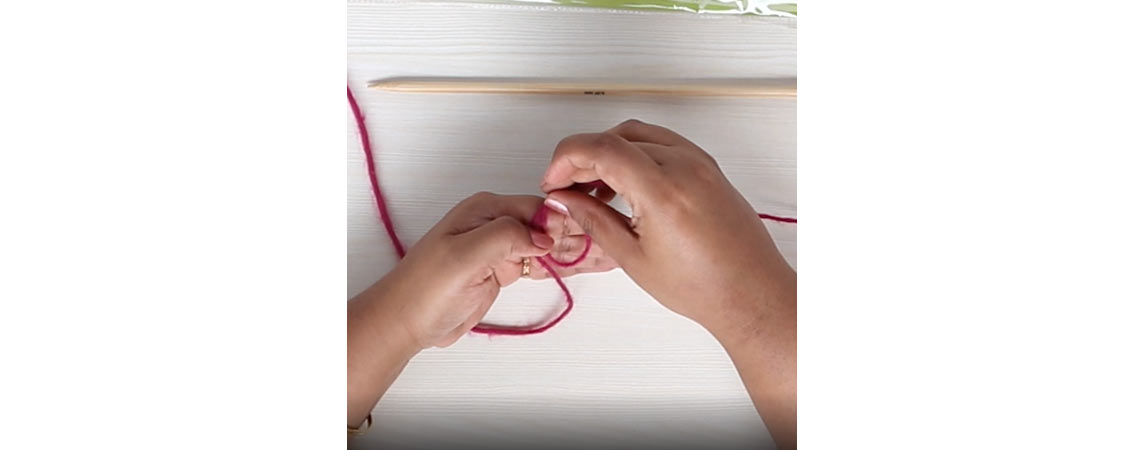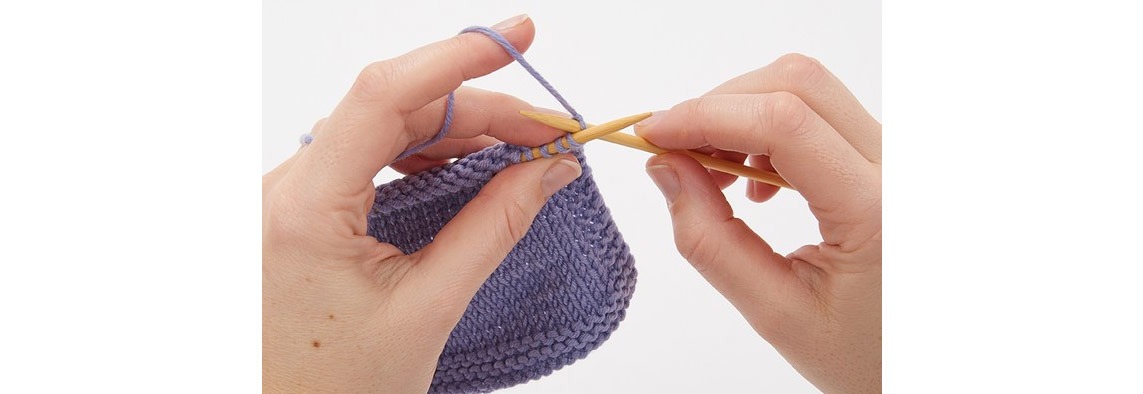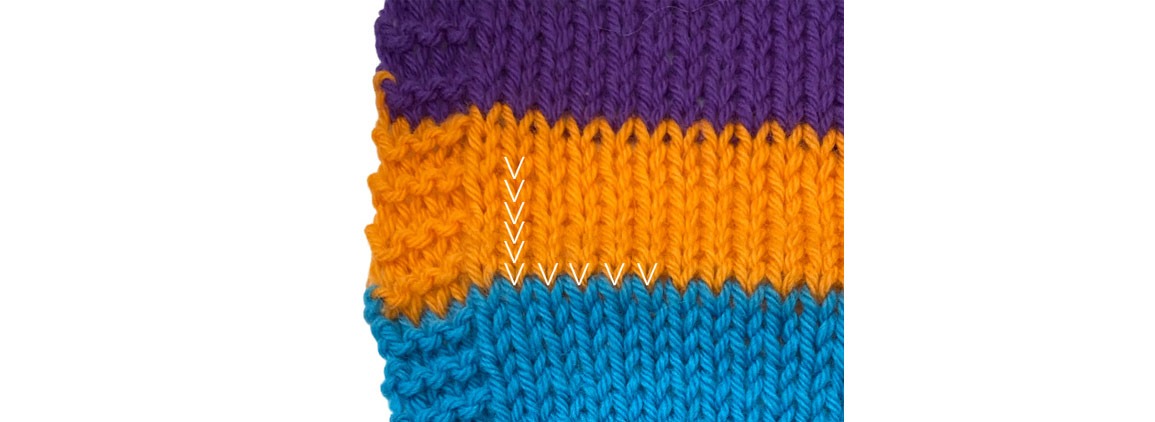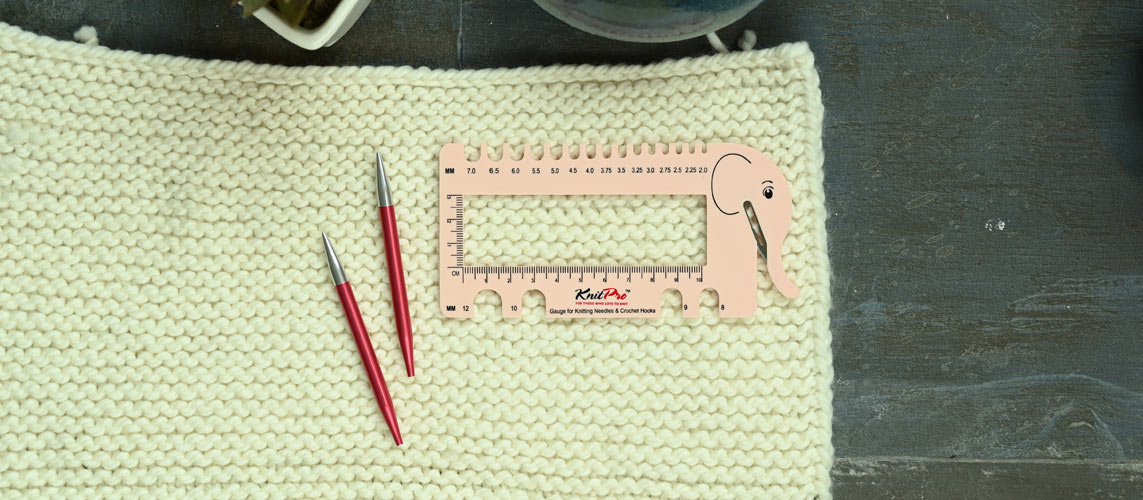In our previous blog, we discussed why knitting gauge is important when you knit or crochet, in this blog we’ll discuss the tips and tricks to correct the gauge.
Gauge is an important factor in your knitting and crochet projects. Whether you are making a pair of socks or a blanket, the first step must be a gauge swatch. With the knitting needles or crochet hook and yarn, the ones that you will be using for the project, make a swatch also known as a tension square, also known as the secret of successful projects that is at least 4 x 4, or better yet, 6 x 6” square. After it’s made, be sure to wash and block it.
To get the correct gauge for your knitting or crochet project, make sure to knit or crochet the stitch that will be utilized in your pattern. After the swatch is ready, it’s important to wash and block the project. After it's dry, using a measuring tape, mark an inch on the swatch you knitted. Measure the number of stitches across the center of the swatch, horizontally, and then measure the number of rows in an inch - this is your stitch gauge. If both stitch and row gauge matches the gauge number given for your pattern, you are all set.
1. Change Knitting Needle or Crochet Hook Size
If you have more stitches on hand than in the pattern, you need to tighten your knitting tension it's best to change your knitting needles or crochet hook to a smaller size. One size or even a 0.5mm smaller does the trick in most cases. On the other hand, if you're getting fewer stitches per inch than indicated on the pattern, going up a needle size should get you more stitches per inch
It has been observed by knitters that changing the type of knitting needle (circular, double pointed or single-pointed) used can affect the gauge. This is not relevant for crochet as the hooks (single-ended, double-ended or Afghan/ Tunisian) have different uses and ways of crocheting. Even though needle sizes are standard, different materials can result in minute discrepancies. This can result in an alteration in the gauge. The way you knit with an aluminum vs. a wooden needle, for instance, can result in a slight difference in gauge. Since needles now come in a variety of materials and finishes, it’s smart to check the gauge based on what you are using.
Using a different kind of needle is also said to be helpful if you're getting a stitch gauge but not a row gauge. Row gauge is not always important, of course, but it can be if, you are knitting a garment sideways.
2. Knit Accor ding to the Pattern- Flat or in the Round
Most knitters and crocheters will find that their gauge in the round differs from their gauge when knitting or crocheting flat. This is because some people’s purl stitches in knitting are a little looser than their knit stitches. If your project is stitched in the round, don’t knit a flat gauge swatch, you won’t have accurate results. Make the gauge using the exact style flats vs circular called for in the pattern.

3. Hold your working yarn right
The way of holding your working yarn too impacts the gauge, whether you knit or crochet. Always try to have a tensioning method that allows a smooth flow of yarn. Another thing to keep in mind is knitting needles need to work closely together. Keeping the needles apart may not just have an uneven gauge but result in dropped stitches, ladders, etc. Also do remember to not stop knitting or crocheting while mid-row. Always finish a row before putting the work down.

4. Try another knitting style
Each knitter is unique in style. In the world of knitting, there are mainly five knitting styles- English (throwing), Continental (picking), Lever, Portuguese and Shetland. The first two are the most used. Changing a new knitting style might seem like a huge project, but it can work to make a difference and it deepens your knowledge of the craft.

5. Keep Neat Edges
In projects with visible edges, it is always important to make neat edge stitches. Loose and sloppy edge stitches have uneven knitting tension. Make sure to add a garter edge to your swatch and even your projects. This helps the tension of the previous row and even the row you’re working on. Even if you’re seaming pieces together loose edge stitches make it difficult to do so. While knitting seamless rounds, the first and last stitch of the row must be tight and neat.

While it is always recommended to get as close to the pattern gauge as possible, the most important thing is to get a fabric that you like or love. When making a blanket, for instance, the gauge can be off a little bit and still be fine. The blanket might be a little bigger or smaller but it won’t be a huge difference provided you use the weight of yarn recommended by the designer. Even if the gauge is not 100% accurate and the fabric you knit or crochet does not have the same look, you can enjoy the result. After all, enjoying the process and appreciating the outcome is the point of knitting.












